Cradle Mountain and Freycinet walks started Tasmania's ecotourism revolution
The remarkable nature-loving woman who kickstarted eco-friendly walking holidays in Tasmania's wilderness 30 years ago has died.
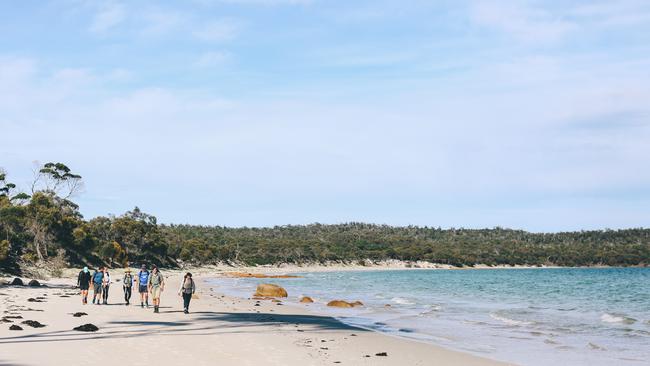
Joan Masterman, the remarkable woman who kickstarted eco-friendly walking holidays in Tasmania's wilderness 30 years ago, has died.
"When Joan was establishing these experiences, the idea of being able to travel and walk in relative comfort and immerse yourself in these stunning national parks just did not exist," her son Michael said yesterday. "In that sense, she was both a visionary and explorer, who had a lifelong love of nature, art and people.
"With my sister, Julia, Joan fought environmental battles to the end with success, contributing to the defence of the Tarkine wilderness, and most recently stopping a damaging resort development on the Freycinet Peninsula near Wineglass Bay and the Hazards."
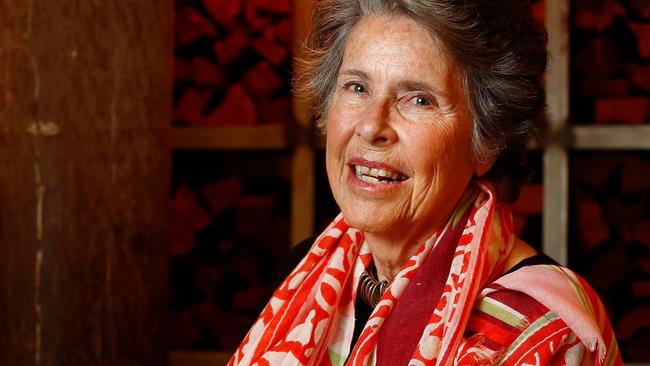
He added: "Joan had a great love for the Tasmania bush in particularly the Freycinet Peninsula. She found such solace and restoration from weeks spent at Friendly Beaches Lodge swimming, walking, communing with guests and her team of fabulous managers and guides. She took joy in working with wonderful young people.
"We all loved her dearly and will greatly miss her."
Below is a story Ricky French wrote to mark the 30th anniversary of the Freycinet Experience Walk.
********
On a headland on Tasmania’s Freycinet Peninsula, high above the crashing waves, a group of hikers is about to become victims of a fiendish deception. We’re picking our way through a maze of grass trees and granite when our guide Billie signals us to stop. It was near this point, she earnestly explains, that an unknown orchid was recently sighted, then promptly lost again, and that naming rights have been offered to the eagle-eyed sleuth who rediscovers it. With the carrot of fame dangling, we shuffle slowly along the track, heads down, scouring the undergrowth for our ticket to botanical immortality.
But our mission is soon revealed to be an elaborate act of misdirection. We round a corner to find not a rare orchid but an even more unlikely treat: a lavish lunch spread laid out in a clearing. Hungry eyes fall upon pita bread and homemade hommus, sliced chicken, falafel, pickles, boiled eggs and salad. Billie’s betrayal is forgiven on first bite, and by the end of the third day only one of the group is still looking for the orchid.
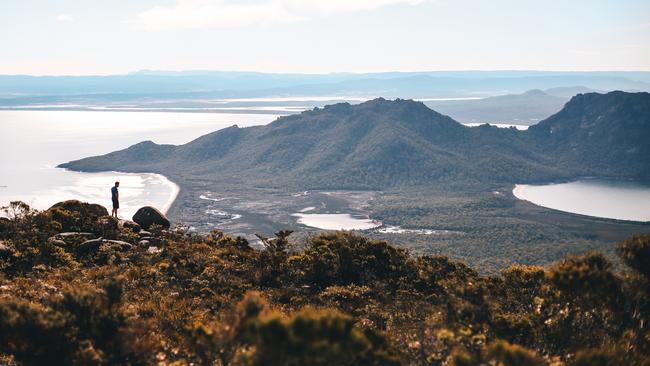
Surprises like this are regular on the Freycinet Experience Walk, which is celebrating its 30th anniversary this year. Over four days, we explore the stunning peninsula on foot and by boat, swimming in secluded beaches, scaling granite mountains, enjoying local food and wine and staying each night in an off-grid eco-lodge hidden behind the scalloped sand dunes of Friendly Beaches.
READ MORE:Walking the Overland Track | Best luxury accommodation in Tasmania | Cradle Mountain Lodge on the market | Hotel review: The Tasman, Hobart | An award-winning Huon Valley holiday home | Tasmania’s best gardens | Heaven and hell in Port Arthur | Tamar Valley treats
The milestone is particularly significant when you consider how strange a venture like this must have sounded 30 years ago, before ecotourism and luxury walking tours became mainstream. Tasmania was still largely captive to the ghost tales of its past, known more as the place where escaping convicts cannibalised each other in the impenetrable bush. The Freycinet Experience Walk helped forge the island a new identity.
That so little has changed in 30 years is testament to how the founders, Joan Masterman and Ken Latona, got it right in the first place. The boat Naturaliste we board at Coles Bay is the same vessel that ferried the first guests. We slap through the chop, skirting past Hazards Beach and pulling up to tiny Refuge Island, where tubby seals are draped over rocks. Skipper Nathan nudges us into the white sand of Schouten Island, 1.6km off the peninsula’s southern tip, where we clamber down a ladder and spill on to a beach. A stream drizzles down from granite peaks above, its tea-leaf tannins leaching into the turquoise sea. It’s too cold for swimming but we do it anyway, dunking our heads three times as is customary on this adventure. Out here, no one can hear your shrieks.
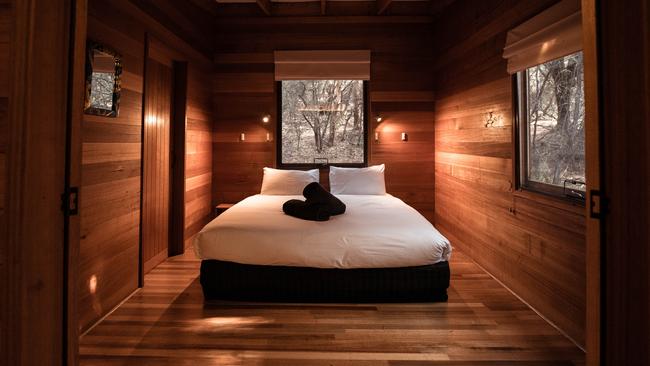
Further traditions endure. A feather pointer is still used to plot our route on the map at each evening’s fireside debrief (guests can opt for the tough ascent of Mt Graham or a more leisurely coastal walk on day two). The flathead served at the lodge on our first night recalls the early days when guests would fish off the side of the boat and fry up their catch at the standing camp on Cooks Beach. The removal of the ephemeral camps (the second was at Bluestone Bay) is the biggest change. It was done partly due to the work involved erecting and dismantling, but mostly because on arrival to Friendly Beaches Lodge for their last night, guests were so enchanted they demanded to know why they weren’t brought here sooner.
Nicknamed the “invisible lodge”, we arrive via a hidden bower in the trees. The structure won the Enduring Architecture prize at the 2018 Tasmanian Architecture Awards. What’s remarkable is it seems more of its time now than it would have when it was built, before sustainable, off-grid designs built in sympathy with their surroundings became gold standard.
Nestled among the she-oaks, the timber cladding and decking flow with the contours of the land. A brick fireplace is the centrepiece of the communal building, with meals served around a candlelit timber dining table. The power is solar, water is collected from the clouds, and the composting toilets are impeccably clean. Our sleeping quarters are warmed by a wood fire and have hot showers and even a bath. There are yoga mats and a couple of discreet power points. Talk about getting it right the first time.
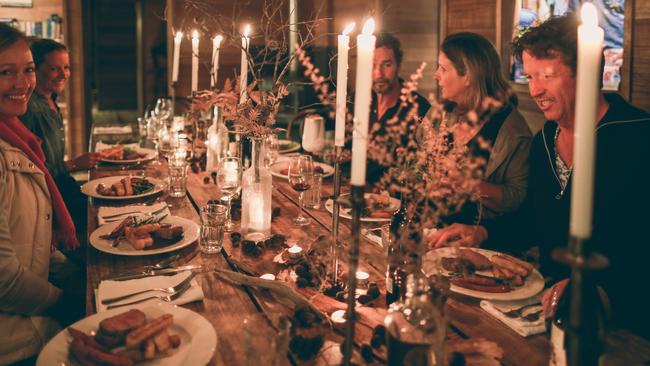
Walks along the deserted Friendly Beaches do wonders for the soul. With each step life’s stresses sink into the sand, carried out to sea on the next wave. Shore birds are constant companions; hooded plovers scurrying to guard their sand-dune nests, pied oystercatchers gliding above the breakers, their bills streaks of scarlet against the frothy sea.
One morning we set the alarm early and head down to the beach for sunrise, sitting on a picnic rug in the pre-dawn stillness. I close my eyes and smell coffee and kelp. Wispy clouds are smeared across the blushing sky like brushstrokes. Sea fog smothers the distant headland. The Hazards mountain range pokes its head up above the morning mist as if rising from slumber. The sun seeps over the horizon and paints our faces gold, a signal for some to hit the surf.

There’s a lot to explore around the lodge. We follow a track through the blue gums to the forest-fringed shores of Saltwater Lagoon. Wombat and wallaby tracks indent the sand, and white-bellied sea eagles circle overhead. But there’s something missing from the picture. Bark canoes no longer slice the surface of the lagoon. The Toorernomairremener people no longer travel through these hills, collecting shellfish and hunting wallabies, living as they had for 30,000 years before being driven from their land. Their absence hangs heavy in the air. Our guides encourage discourse of this difficult topic, not lecturing but allowing us to share our thoughts. It’s a conversation we might not have had 30 years ago, but this is a new Tasmania, one prepared to confront its past and move forward with reconciliation and healing.
Billie has hinted at a quick “brunch” before our final march up Friendly Beaches to the bus, but the outlandish spread of wallaby rendang curry, capsicum and eggplant stuffed with wild rice and currants, shakshuka, fresh mussels, fish cakes and fruit cements her reputation as an unreliable narrator. We raise a glass of East Coast pinot rose to 30 years of forward thinking; to an experience that celebrates local food and wine, and serves it on a platter of breathtaking landscape, wildlife and walking. From cannibal convicts to a much more palatable form of escapism.
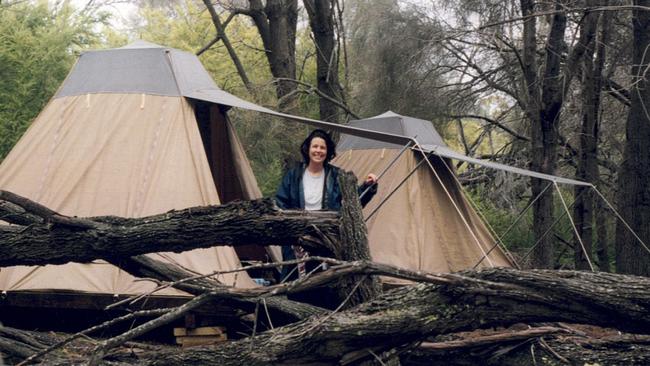
More to the story
There are two guests of honour at a Friday evening function in Hobart to celebrate the 30th anniversary of the Freycinet Experience Walk. A flight from Sydney is a significant undertaking for Joan Masterman at age 84, but it’s clear what being here with her family means to her. It’s also her first reunion with Ken Latona since the business partners went their separate ways in 1997, not long after changing the face of Tasmanian tourism forever.

She was a town planner, he was an architect. Together they became almost accidental trailblazers, their blueprints for commercial lodgings concealed in wild places setting a benchmark for ecotourism. In 1985, they won the tender to build private huts along the Overland Track, inside the Tasmanian Wilderness World Heritage Area. The project proceeded against a backdrop of nation-defining environmental activism, coming after the successful campaign to stop the damming of the Franklin River. Amid feverish scrutiny, the project was executed faultlessly, with Masterman and Latona proving wilderness could be showcased in comfort (maybe even a touch of luxury) without compromising its inherent values. The Freycinet Experience Walk sealed the pair’s reputation. Latona would go on to design the award-winning Bay of Fires Lodge, while Masterman kept the Freycinet venture.
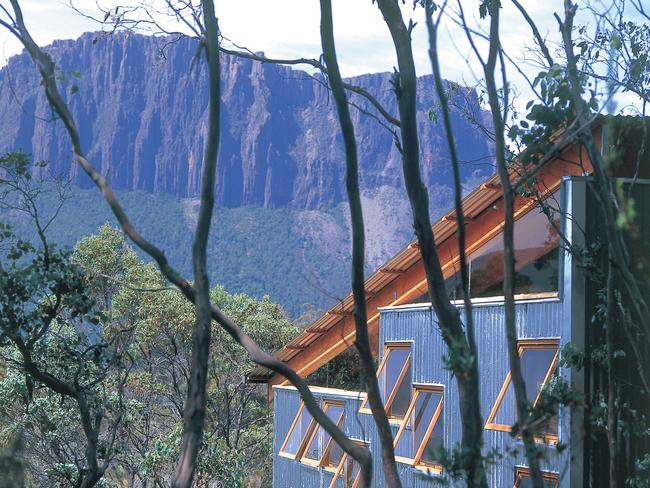
The Tasmanian wilderness remains a frontier ripe for commercial exploitation, and the delicately balanced scales could easily tip, something Masterman is keenly aware of. “One of the reasons we were so successful was because the lodge is so hidden,” she says, flanked by son Michael and grandson Isaac, to whom the baton has been passed. “You couldn’t see it from the beach. It was a kind of secret place.”
The secret may be out, but the tranquillity and the connection with nature remains. “They are very precious places,” says Masterman. “I think people are much more conscious of treating nature with a good deal of respect.”
In the know
Freycinet Experience Walk is part of Great Walks of Australia. Trips run October to May, departing from Hobart; $2950 a person (October-December) and $3150 (January-May). No single supplement.
Ricky French was a guest of Freycinet Experience Walk and Tourism Tasmania.
